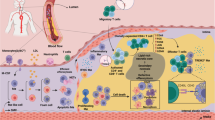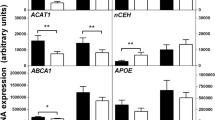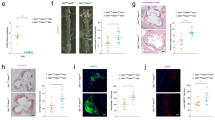Abstract
The macrophage plays a diverse array of roles in atherogenesis and lipoprotein metabolism. The macrophage functions as a scavenger cell, an immune mediator cell, and as a source of chemotactic molecules and cytokines. Chemokines have been implicated in promoting migration of monocytes into the arterial intima. Monocyte chemoattractant protein-1 (MCP-1) attracts monocytes bearing the chemokine receptor CCR-2. Macrophage expression of cyclooxygenase-2, a key enzyme in inflammation, promotes atherosclerotic lesion formation in low-density lipoprotein receptor (LDLR)-deficient mice. In the arterial intima, monocytes differentiate into macrophages, which accumulate cholesterol esters to form lipid-laden foam cells. Foam cell formation can be viewed as an imbalance in cholesterol homeostasis. The uptake of atherogenic lipoproteins is mediated by scavenger receptors, including SR-A and CD36. In the macrophage, ACAT-1 is responsible for esterifying free cholesterol with fatty acids to form cholesterol esters. Surprisingly, deficiency of macrophage ACAT-1 promotes atherosclerosis in LDLR-deficient mice. A number of proteins have been implicated in the process of promoting the efflux of free cholesterol from the macrophage, including apoE, ABCA1, and SRB-1. Macrophage-derived foam cells express the adipocyte fatty acid-binding protein (FABP), aP2, a cytoplasmic FABP that plays an important role in regulating systemic insulin resistance in the setting of obesity. ApoE-deficient mice null for macrophage aP2 expression develop significantly less atherosclerosis than controls wild type for macrophage aP2 expression. These results demonstrate a significant role for macrophage aP2 in the formation of atherosclerotic lesions independent of its role in systemic glucose and lipid metabolism. Furthermore, macrophages deficient in aP2 display alterations in inflammatory cytokine production. Through its distinct actions in adipocytes and macrophages, aP2 links features of the metabolic syndrome including insulin resistance, obesity, inflammation, and atherosclerosis.
This is a preview of subscription content, access via your institution
Access options
Subscribe to this journal
Receive 12 print issues and online access
$259.00 per year
only $21.58 per issue
Buy this article
- Purchase on Springer Link
- Instant access to full article PDF
Prices may be subject to local taxes which are calculated during checkout
Similar content being viewed by others
Author information
Authors and Affiliations
Corresponding author
Rights and permissions
About this article
Cite this article
Linton, M., Fazio, S. Macrophages, inflammation, and atherosclerosis. Int J Obes 27 (Suppl 3), S35–S40 (2003). https://doi.org/10.1038/sj.ijo.0802498
Published:
Issue Date:
DOI: https://doi.org/10.1038/sj.ijo.0802498
Keywords
This article is cited by
-
Pro-efferocytic macrophage membrane biomimetic nanoparticles for the synergistic treatment of atherosclerosis via competition effect
Journal of Nanobiotechnology (2022)
-
HIV Protein Tat Induces Macrophage Dysfunction and Atherosclerosis Development in Low-Density Lipoprotein Receptor–Deficient Mice
Cardiovascular Drugs and Therapy (2022)
-
Anti-Inflammatory Effects of an Extract from Pseudomonas aeruginosa and Its Purified Product 1-Hydroxyphenazine on RAW264.7 Cells
Current Microbiology (2021)
-
Lipingshu capsule improves atherosclerosis associated with lipid regulation and inflammation inhibition in apolipoprotein E–deficient mice
Lipids in Health and Disease (2018)
-
The synergistic effect of homocysteine and lipopolysaccharide on the differentiation and conversion of raw264.7 macrophages
Journal of Inflammation (2014)



